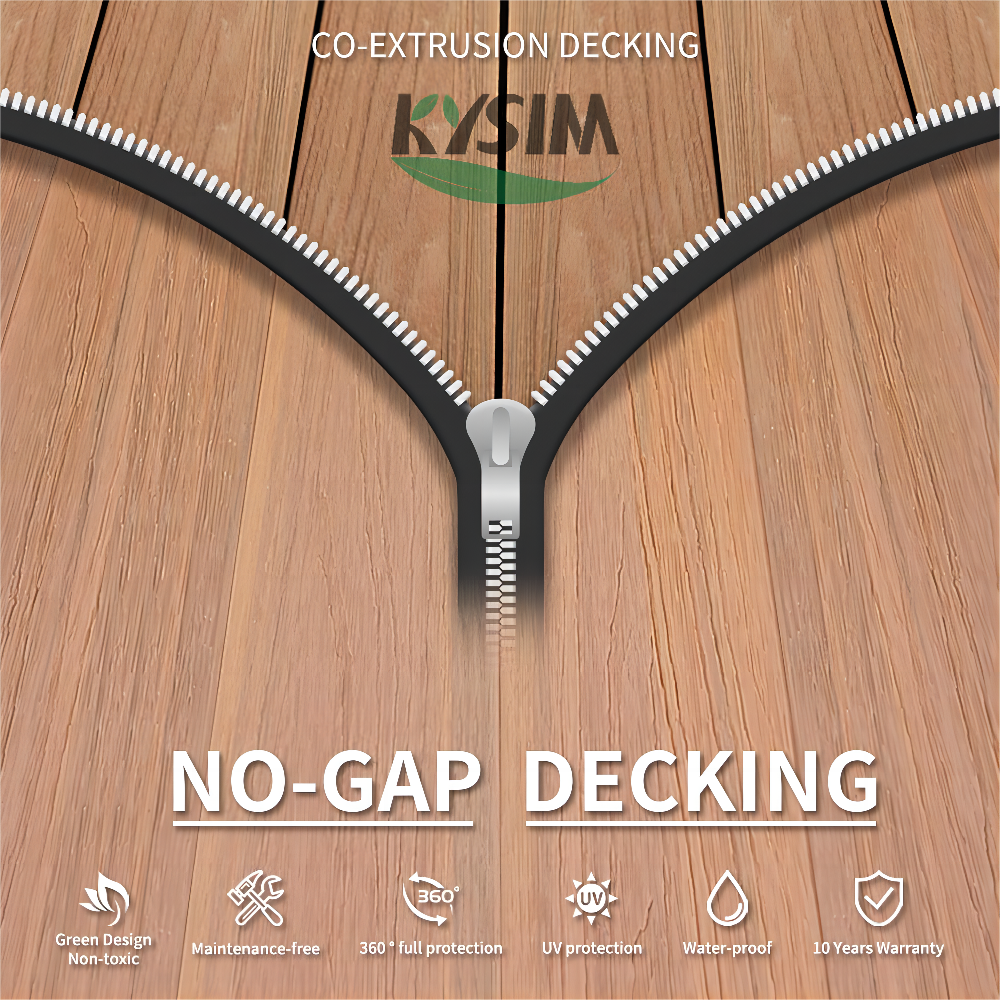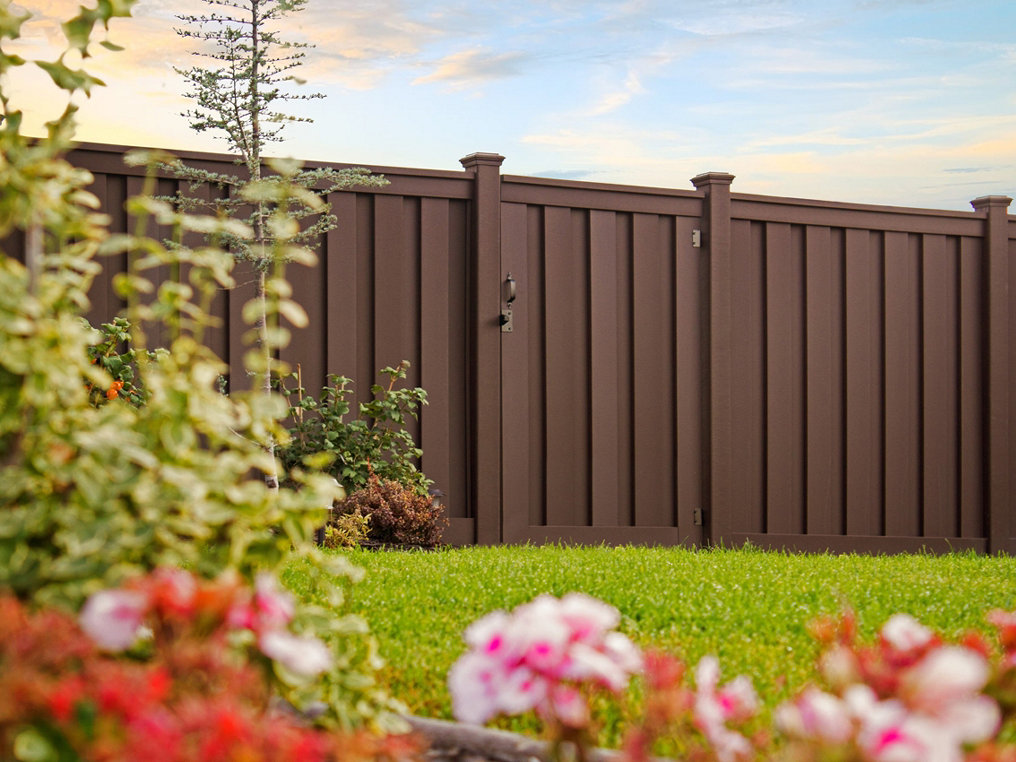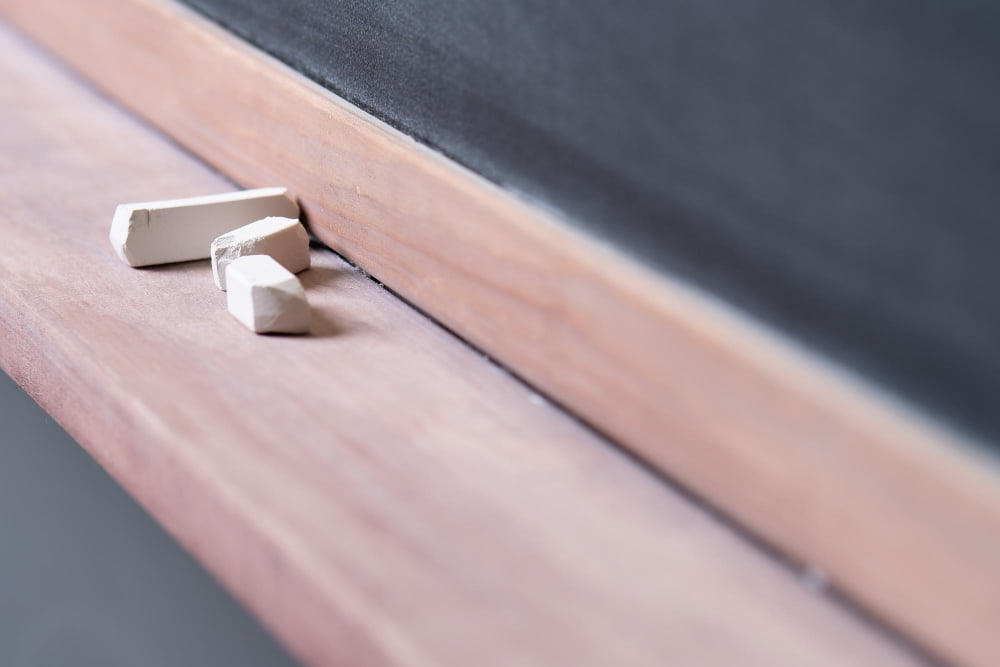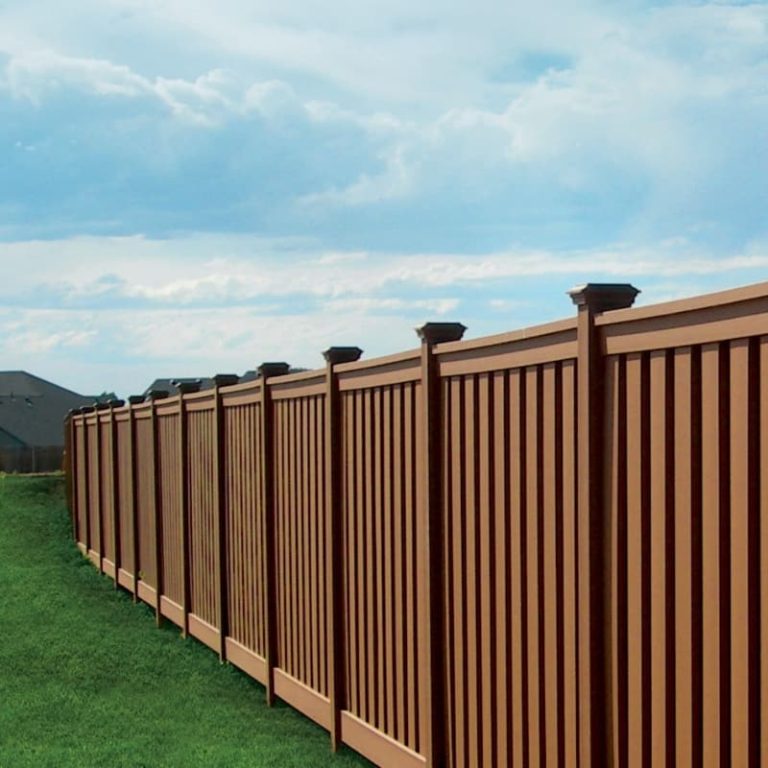
Key point you must know about the seamless decking
April 10, 2024
How to install WPC Fencing
April 21, 2024”
When I first considered replacing my weathered wood fence, composite fencing caught my eye like that shiny new grill your neighbor just had to show off. These modern marvels blend wood fibers with recycled plastics, creating what manufacturers claim is the superhero version of traditional fencing – tougher than termite-resistant timber and more durable than that “indestructible” plastic patio chair we’ve all seen crack after one winter. But here’s the million-dollar question: Do these space-age fences really live up to their low-maintenance reputation?
I learned this firsthand after helping install a Trex® composite fence for my cousin’s backyard makeover (
Think of composite fencing as that high-maintenance friend who swears they’re “low effort” – sure, they won’t rot or warp like traditional wood, but try leaving them untouched for years and you’ll be met with a grimy surface that even pressure washing struggles to revive. The truth? These fences demand regular care, just different care. From unexpected chalk art masterpieces courtesy of neighborhood kids to mysterious oil splatters from backyard BBQ adventures, keeping composite looking fresh requires specific cleaning know-how.
Let me share something I learned the hard way about composite fences – that “low-maintenance” label can be kinda misleading. When I first installed mine, I figured I could just let it be like those carefree Instagram influencers. Boy, was I wrong! These modern marvels do hold up better than wood, but they still need some TLC to stay looking sharp.

Here’s the real deal – you’ll want to give your composite fence a good once-over every few weeks. I keep a soft-bristle brush and mild soap solution handy by my back door. Quick tip: Never use pressure washers unless you want to risk damaging the surface. And whatever you do, resist that urge to paint or stain – these materials just don’t play nice with traditional wood treatments.
Funny story – my neighbor tried using leftover deck stain on his composite fence last summer. Let’s just say it ended up looking like a toddler’s finger-painting project! Stick to gentle cleaning methods instead. I’ve found that a monthly wipe-down with a vinegar-water mix (about 1:3 ratio) works wonders for keeping that like-new appearance.
Pro tip: Pay extra attention to areas near flower beds or sprinklers. That’s where dirt and moisture love to hang out. A little preventive care goes a long way in avoiding stubborn stains or mildew buildup. Trust me, it’s easier to spend 15 minutes now than scrub for hours later!
When your composite fence starts looking like it’s been through a mud wrestling match, don’t panic – I’ve been there too! The secret weapon in my cleaning arsenal? A simple two-step process that works like magic. Start by dry-brushing loose debris with a stiff-bristle broom (the kind you’d use on patio furniture works great), paying extra attention to those textured grooves that trap dirt. Here’s a pro tip I learned from a contractor friend: always sweep downward in the direction of the grain to avoid pushing debris deeper into the material.

For stubborn ground-in dirt, mix up a batch of my go-to cleaning solution: warm water with a few drops of Dawn dish soap. I like using an old laundry detergent measuring cup to get the ratio just right. Dip a soft nylon brush (nothing scratchy!) and scrub in circular motions. Rinse thoroughly with a garden hose – no pressure washers needed! Last summer I helped my neighbor revive his weather-beaten composite fence using this exact method, and you should’ve seen the transformation!
Remember to work in small sections and dry with a microfiber cloth as you go. Takes me about an afternoon to do my 40-foot fence, but hey – perfect excuse to enjoy some sunshine while keeping your property looking sharp!
Cleaning Chalk Marks on Composite Fences Made Simple
Here’s something I learned the hard way after my kids turned our backyard fence into their art canvas: While composite fences handle chalk better than wood, you still need proper cleaning techniques. For those colorful masterpieces, start with a damp microfiber cloth – it works wonders on fresh chalk marks. Gently wipe in the direction of the grain to avoid scratching the surface.

Stubborn residue? Mix warm water with a teaspoon of mild dish soap. I keep a soft-bristled cleaning brush specifically for fence maintenance – it’s perfect for scrubbing without damaging the material. Pro tip: Avoid using chalk markers or oil-based chalks unless you want permanent decorations. Stick to regular sidewalk chalk that washes off easily.
Last summer, my neighbor used colored chalks that stained their fence panels. They ended up needing a specialized composite cleaner from Peerless Fence to remove the marks completely. Lesson learned? Quality matters – both in your fence material and your art supplies!

Remember to rinse thoroughly with clean water after cleaning. Leftover soap can attract dirt, making your fence look dirty again faster. For persistent stains, a 50/50 vinegar-water solution works surprisingly well. Just test it on a small area first – better safe than sorry!
Here’s something I learned the hard way after installing my composite fence last summer – while these modern marvels shrug off grease and oil better than my old wooden fence ever did, they’re not completely stain-proof. That grilled chicken incident during our Fourth of July barbecue? Let’s just say I became an expert in composite cleanup real quick!
The magic of composite fencing lies in its protective polymer coating that creates a slick surface. Unlike thirsty wood that soaks up stains, spills tend to bead up on composite boards. But here’s the kicker – if you let that burger grease sit too long (like I did), it can still leave a faint shadow. The good news? You don’t need fancy cleaners. I keep a bucket of warm soapy water and microfiber cloths by my grill station now. A quick wipe-down while the stain’s fresh does the trick.

For tougher messes like automotive fluids (my teenager’s motorcycle phase taught me this), grab an all-purpose cleaner without harsh chemicals. I’m partial to the citrus-based stuff – cuts through grease without that chemical smell. Pro tip: Always scrub along the wood-grain pattern to maintain that natural look. And whatever you do, skip the pressure washer! I learned that lesson the expensive way when I accidentally etched lines into my neighbor’s fence.

Here’s the real beauty – while composite needs occasional TLC, it’s way less work than maintaining wood. No sanding, no sealing, just simple cleaning. That polymer surface we talked about? It’s like the non-stick pan of fencing world. Most spills wipe right off if you catch them early. So next time your fryer overflows or the lawnmower spits oil, don’t panic – your trusty dish soap and elbow grease have got your back!
Let me tell you something you might not expect – even these modern composite fences need some TLC when it comes to mold and mildew. You’d think the ‘wood-alternative’ label means zero upkeep, right? Well, here’s the real deal from someone who’s battled backyard fungus firsthand.

Ever noticed those greenish patches creeping up your fence after rainy season? That’s nature trying to move in! Here’s what works for me: Mix up a simple vinegar solution (1 part white vinegar to 3 parts water) and keep it in a spray bottle. When I spot suspicious spots, I spray, let it sit for 10 minutes, then gently scrub with an old toothbrush. Pro tip from composite material experts – never use bleach unless you want faded colors!

But here’s the kicker – prevention beats cure every time. I make it a habit to trim back plants near my fence (sorry, overenthusiastic ivy!), and during damp seasons, I’ll wipe down shaded sections weekly. Found this mold-resistant cleaner at my go-to composite care site that’s been a game-changer. Remember, it’s not about heavy scrubbing – regular light cleanings keep those microscopic party-crashers from settling in!
